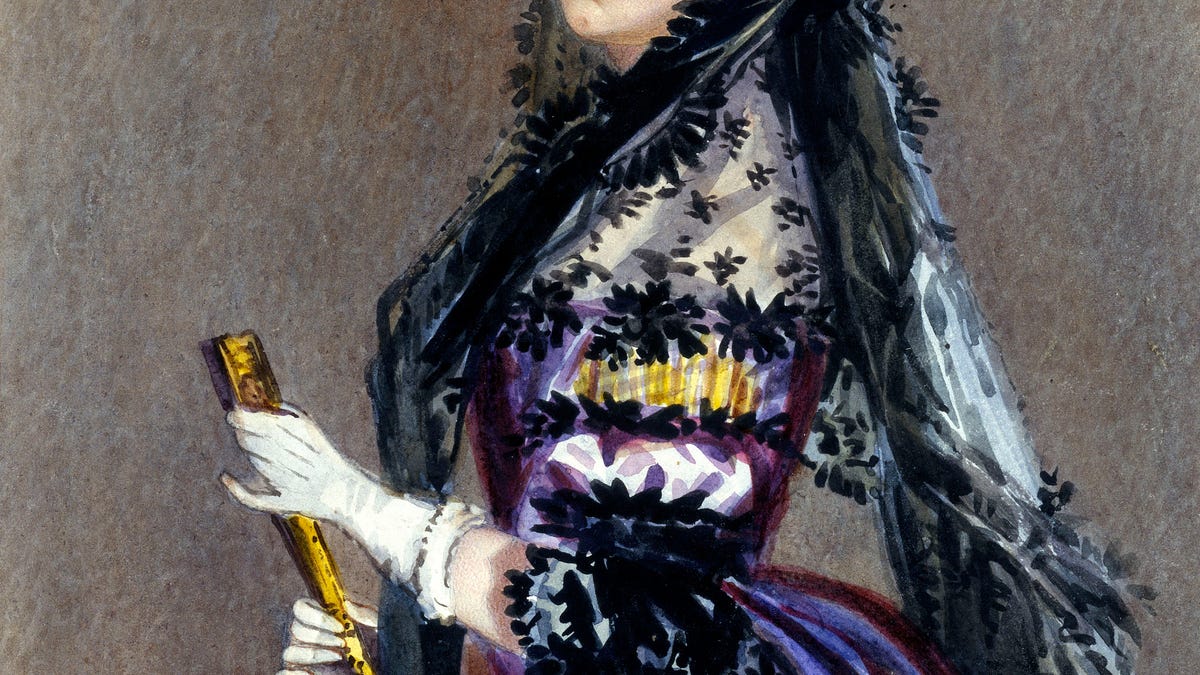Ada Lovelace Day: Why we're still talking about her
Lovelace is a controversial figure in the history of computing. Here's why she still matters.

Ada Lovelace is often referred to as the first computer programmer.
The discussion of women in technology goes back to before the industry existed.
Tuesday marks Ada Lovelace Day, a celebration of women in STEM (science, technology, engineering and mathematics). The eponymous occasion also honors a woman who, in the first half of the 19th century, might have been the world's first computer programmer.
Lovelace, the daughter of English poet Lord Byron, was one of England's most educated women at the time, according to Chris Garcia, curator of the Computer History Museum in Mountain View, California.
"She was phenomenally well-read," Garcia said. "She had a depth of understanding that was even greater than many of the authors of the works that she was consuming."
These days, she's best-known for the work she did on mathematician Charles Babbage's Analytical Engine, an early idea for a general-purpose computer.
Beyond that, though, she has become a symbol for women in a field that employs few. A study by online educator Pluralsight and Women Who Code identified the absence of women role models as one the biggest hurdles for women in tech. It's an issue that Silicon Valley, the White House and other institutions have been grappling with in recent years.
Lovelace is sometimes referred to as the first computer programmer for the work she did on Babbage's creation, but the thought is far from universally held. The Analytical Engine was never finished, leading some people to argue there wasn't anything for her to program.
Still, Garcia said, Lovelace was a rare person who was actually capable of understanding the vision and potential of a machine like the Analytical Engine.
As Walter Isaacson wrote in his book "The Innovators: How a Group of Hackers, Geniuses, and Geeks Created the Digital Revolution," Lovelace "[made] the conceptual leap from machines that were mere calculators to the ones that we now call computers."
For a long time, however, she was just about forgotten.
It's not an uncommon story. Many women involved in the early days of science and computing have been largely written out of history.
Six women originally programmed ENIAC, the first programmable computer in 1946, but, according to the ENIAC Programmers Project, when the computer made its debut in the press, they were not introduced.
And three black women who were mathematicians at NASA helped put John Glenn in orbit in 1962 by calculating things like flight paths. They're now the subjects of a book and upcoming movie called "Hidden Figures."
Their stories are often left out of the history of science. For a long time, Lovelace was no different.
Interest in Lovelace grew in the 1980s and 1990s when historians Allan G. Bromley, and then Doran Swade, began to dig further into Babbage's work. Two schools of thought emerged. One held Lovelace as a brilliant visionary of computing; the other saw her as an insignificant figure.
If nothing else, Lovelace gets name-checked a lot.
The US Department of Defense named a programming language after her in the 1970s, and Ada Lovelace Day was established in 2009 to celebrate women making achievements in STEM. Open source hardware company Adafruit's name is a nod to Lovelace. There's even a company called Ada Diamonds that makes laboratory diamonds, also named for Lovelace.

